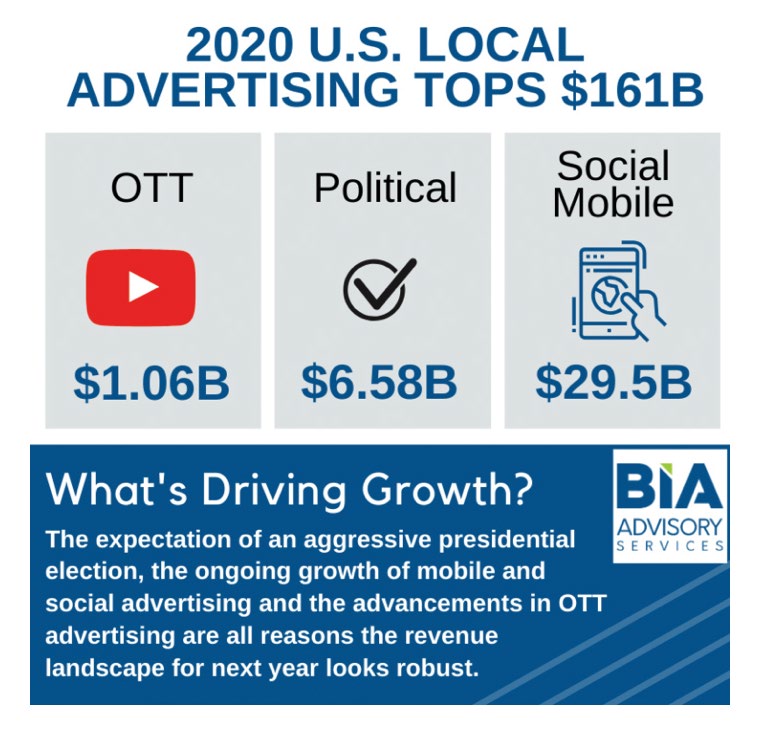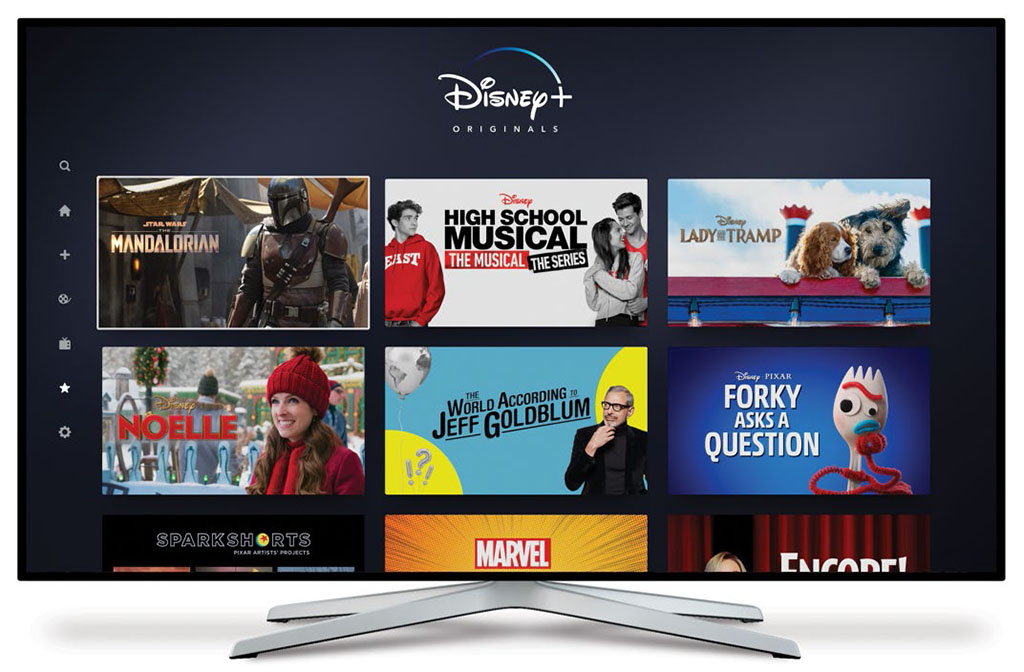A New Year, A Clearer Vision for Broadcast?

SAN FRANCISCO—Here in 2020, we find ourselves part of a media ecosystem that’s being shaped by a few key factors—among them consolidation, re-adaptation and fiercer competition—that might have been hard to imagine at the start of the decade.
Yet despite the bumps ahead (and there are certainly a few), the state of the media industry looks vivid and bright.
“I think it’s morning in the broadcast industry,” said Josh Stinehour, principal analyst for a Devoncroft Partners, a market research and consulting firm. “Media companies are not becoming irrelevant. Although there’s been a lot of bumpiness, people who say that media companies are dying are just embarrassing themselves.”
OPTIMISM IN AN EVEN-NUMBERED YEAR
Trends that will shape the industry include the ratcheting up of OTT streaming services, shuffled alliances between content companies, downsizing and consolidation among technology vendors, and ongoing adoption of IP, AI, advanced advertising and NextGen TV.
All this is leading analysts to say that the state of the media industry looks hopeful. Not only is the economy strong but 2020 looks to be a remarkable year for political advertising which will certainly be a boom for media companies, according to Mark Fratrik, chief economist and senior vice president with BIA Advisory Services.

In 2020, approximately $6.58 billion will be spent in local political advertising that will be spread across over-the-air, online/digital, cable, radio and OTT—with OTA nabbing $3.07 billion or 47% of those revenues. Beyond political advertising, more than $1 billion will be spent on locally activated OTT advertising and nearly $30 billion spent on mobile/social advertising in 2020, according to a forecast by BIA.
The professional video industry's #1 source for news, trends and product and tech information. Sign up below.
When it comes to technology that’s leading the charge, analysts point to the roll out of ATSC 3.0 but caution that the technology will take awhile to catch on. “There is excitement about it but [its rollout is going to be over] a much longer time span,” Fratrik said. “It will take a while for consumers to buy new sets and for broadcasters to develop the business models to make NextGen TV a reality.”
Still, ATSC 3.0 is a beacon for broadcasting to follow. “It’s essential for broadcasters to be able to compete with all of the choices available for consumers,” he said.
IMPACT OF CLOUD AND IP
Other technologies have made significant strides too over the last 12 months. The end of 2018/beginning of 2019 was a real milestone for the cloud, according to Stinehour. “In large part, the cloud was proven out and as a result, we’ve seen an acceleration of cloud-based technologies and services,” he said.
Heading into 2020, the industry should continue to fully turn its attention to IP-based infrastructures, analysts said. More facilities have invested in all IP-based production facilities. In the case of Telemundo Deportes in Miami for example, by foregoing a traditional SDI setup the broadcaster was able to invest in a cost-effective system for covering major events like the 2019 FIFA Women’s World Cup in France.
The year 2019 was expected to be an important inflection point in the industry-wide adoption of IPbased technologies, according to Devoncroft’s 2019 Big Broadcast Survey, published last spring.
“This is the year that IP moved off the drawing board, out of standards bodies, and beyond one-off marquee projects and began to become more widely understood and adopted by both buyers and suppliers of media technology products and services,” authors of the report said.
The year 2020 will also usher in a renaissance in terms of how the industry understands how technology operates in the media industry, Stinehour said. “It’s my assertion that media companies are underinvested in technology [and] I think it’s interesting to look at how we got here.” What’s kept the industry underinvested? Legacy equipment, he said. “When you think about the outbuild of [facilities] from five years ago, there was no discussion of how efficient those workflows were because we had no ability to get visibility of those metrics,” he said. “There was very little feedback of what ‘good’ was. Now the industry needs to continue to find ways to put that information into the hands of those who are making purchasing decisions.”
NEW MEDIA PLAYERS
Among the industry’s other challenges, broadcasters are also contending with new media natives like podcasters, video games developers and content media influencers who have become direct competitors with mainstream content companies.
It will be noteworthy, Fratrik said, to see how this influx of content companies will flush out the market. “It’ll be interesting because you have new entrants and a lot of existing companies—is it going to be too much? Sooner or later there will be a winnowing out—but that may not be in 2020.”
A big part of the TV industry’s future will also lie in the ability for broadcasters to continue to successfully resolve TV and OTT ad integration and coordination.
“OTT is remarkable,” Fratrik said, pointing to new entrants like Disney+, which signed up 10 million subscribers to its new streaming program on its first day. The company’s goal is to sign up between 60 million and 90 million subscribers worldwide by fiscal 2024.

But at the same time, there’s a tragedy to OTT, Stinehour said. “The tragedy of OTT is that the revenue models have not been consistent in terms of ad rates and subscription rates.”
The industry also must contend with strong, jumbo-sized new players in the content creation space. Over the last several years the industry has watched significant mergers between content creation companies, including the 2019 merger of Viacom and CBS Broadcasting, which resulted in the creation of Viacom-CBS. That brought together well-known brands like CBS, MTV, Nickelodeon, Paramount and Showtime. That union comes after other significant mergers between Disney and Fox, AT&T and Time-Warner, Comcast and Sky, and Discovery and Scripps Network.
REGULATORY RELIEF
The industry also is facing a roadblock when it comes to regulatory relief in the form of loosened media owner-ship rules, Fratrik said. In September a federal court of appeals struck down the efforts of the Federal Communications Commission to loosen U.S. media ownership rules and eliminate the 40-year-old ban on cross-ownership of a newspaper and TV station in a major market. The court handed the issue back to the FCC, pointing to concerns about the effect the rule changes would have on women and racial minority ownership.
“I’m not excited about the lack of regulatory relief,” Fratrik said. “TV ownership [rules] haven’t changed since 1998 even though it’s a whole different world.”
One thing that analysts may be expecting to change: the spring NAB Show in Las Vegas.
“As we increasingly don’t need to touch the technology you buy, you’re going to see the exhibition itself change,” Stinehour said. “We still need to have a central gathering and a place to network, and there has to be some real knowledge sharing for customers that want to get exposed to lots of suppliers in one area. That aspect of the show will continue to persist.”
But the April convention may evolve into a more targeted show as time goes by.
“Bigger companies will get bigger and smaller companies will get smaller,” he said, with each perhaps setting up symbiotic partnerships in the larger ecosystem. Take for example the announcement that Fox and Amazon Web Services (AWS) have agreed to collaborate on an 8K-capable media platform for delivering content across traditional and digital platforms. Dr. Werner Vogels, vice president and chief technology officer at Amazon, said the platform will serve as the nerve center for Fox distribution and operation capabilities. “[It will be] supporting the most demanding needs of live broadcast television production and distribution with plenty of capacity,” he said.
More companies are investing in partner communities too, such as the Alliance for IP Media Solutions (AIMS), which now has more than 150 members as part of its knowledge-sharing alliance.
“I’m of the opinion that there aren’t enough buyers for the number of sellers that are out there,” Stine-hour said. “So you’ll start to see smaller companies, who can supply functionality, at the same time draft off of the sales and marketing of larger groups like Ross, AWS and Grass Valley.”
The NAB Show may evolve away from the “eye candy aspect” of $100,000 booths. “But even if there’s less bravado that doesn’t mean you’ve gotten less important,” he said.
Susan Ashworth is the former editor of TV Technology. In addition to her work covering the broadcast television industry, she has served as editor of two housing finance magazines and written about topics as varied as education, radio, chess, music and sports. Outside of her life as a writer, she recently served as president of a local nonprofit organization supporting girls in baseball.

